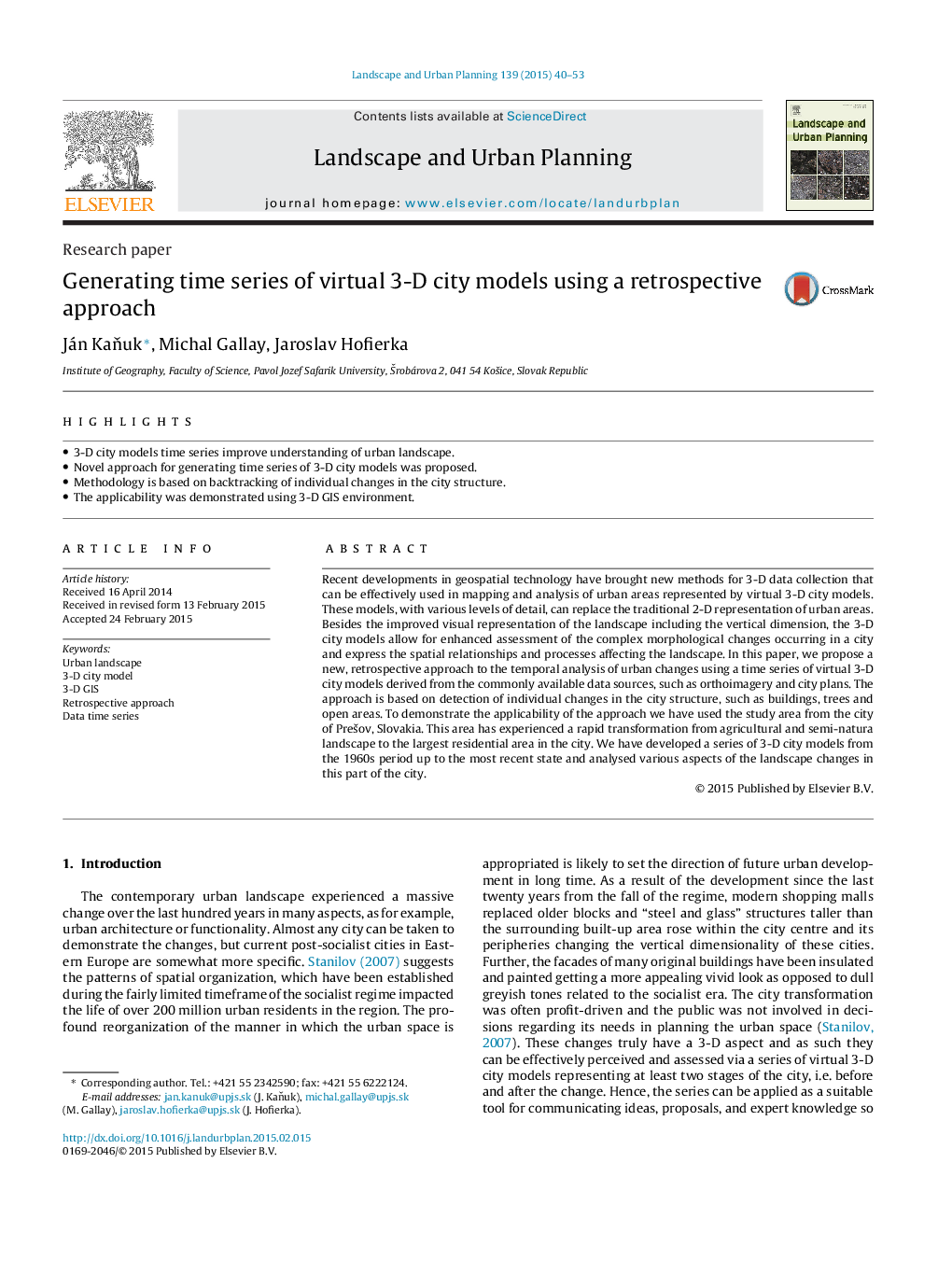| Article ID | Journal | Published Year | Pages | File Type |
|---|---|---|---|---|
| 7461164 | Landscape and Urban Planning | 2015 | 14 Pages |
Abstract
Recent developments in geospatial technology have brought new methods for 3-D data collection that can be effectively used in mapping and analysis of urban areas represented by virtual 3-D city models. These models, with various levels of detail, can replace the traditional 2-D representation of urban areas. Besides the improved visual representation of the landscape including the vertical dimension, the 3-D city models allow for enhanced assessment of the complex morphological changes occurring in a city and express the spatial relationships and processes affecting the landscape. In this paper, we propose a new, retrospective approach to the temporal analysis of urban changes using a time series of virtual 3-D city models derived from the commonly available data sources, such as orthoimagery and city plans. The approach is based on detection of individual changes in the city structure, such as buildings, trees and open areas. To demonstrate the applicability of the approach we have used the study area from the city of Prešov, Slovakia. This area has experienced a rapid transformation from agricultural and semi-natura landscape to the largest residential area in the city. We have developed a series of 3-D city models from the 1960s period up to the most recent state and analysed various aspects of the landscape changes in this part of the city.
Keywords
Related Topics
Life Sciences
Agricultural and Biological Sciences
Ecology, Evolution, Behavior and Systematics
Authors
Ján KaÅuk, Michal Gallay, Jaroslav Hofierka,
